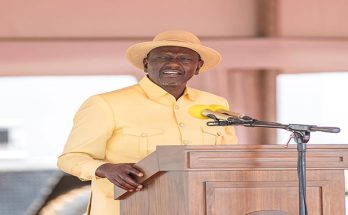 The roll out of renewable energy at the scale envisaged in South Africa’s official electricity plan to 2030 presents a “remarkable” industrialisation opportunity, the leader of the South African Renewable Energy Masterplan (SAREM) project team, Francis Jackson, stated.
The roll out of renewable energy at the scale envisaged in South Africa’s official electricity plan to 2030 presents a “remarkable” industrialisation opportunity, the leader of the South African Renewable Energy Masterplan (SAREM) project team, Francis Jackson, stated.
Francis Jackson, who is also a GreenCape special adviser, cautions, however, that the local industrial capacity built between the year 2010 and 2015 , when South Africa was procuring new capacity on a regular basis under the Renewable Energy Independent Power Producer Procurement Programme (REIPPPP) – has since been downscaled and will have to be rebuilt.
This rationalisation followed a 4 year delay in the conclusion of contracts for the Renewable Energy Independent Power Producer Procurement Programme Bid Window 4 projects, after the previous Eskom management refused to enter into new power purchase agreements in year 2015 on the basis that it had returned to a surplus generating position.
“We are not picking up from where we had left off,” Jackson lamented during a recent webinar co-hosted by the South African Photovoltaic Industry Association and the South African Wind Energy Association.
“We will have to re build up to the year 2015 level first and a lead time may be required for previously established core manufacturing capacity and balance-of-plant capacity to ramp up again.”
Francis Jackson revealed that interviews with original-equipment manufacturers and other suppliers, being held as part of the SAREM drafting process, highlighted the need for South Africa to demonstrate continuity of demand so as to re-establish its credibility as a destination of choice for renewables-linked investment.
That said, most also indicated that the scale of the programme outlined in the IRP2019 should be more than sufficient to attract new wind and solar related investment.
The gazetted document envisages 1600 MW of new wind and 1000 MW of new solar PV capacity being installed yearly from 2022. Although there are some gaps in the yearly utility scale solar PV allocation, the technology is anticipated to mop up the bulk of the 500 MW yearly allocation for distributed generation plant.
In total, the IRP2019 anticipates that some 14400 MW of additional wind and at least 6000 MW of additional utility scale solar PV will be installed by year 2030.
Respondents to the SAREM interviews had indicated that yearly build outs of 400 MW would be more than sufficient to entice new wind related investment, with the IRP2019 having the potential to attract up to 3 new wind tower manufacturers, depending on the size of the turbines and the split between steel and concrete towers.
The solar PV allocation was also of a scale that various components could be localised, with potential even for some domestic module manufacturers beyond those which are already existing locally.
The attractiveness of South Africa would be amplified further should wind and solar PV export opportunities be identified and secured, particularly into the rest of Africa.
Jackson identified the expansion of domestic steel and aluminium production as a “low hanging fruit”, with the IRP2019 suggestive of a 5 percent increase in local steel production, which could add R2.2-billion to gross domestic product and create 700 jobs.
The development of toll manufacturing facilities, which could produce for several OEMs, was another near-term possibility, as it would help reduce the risks associated with the “uncertain nature of procurement”.
Besides towers and tower internals, local nacelle assembly was also being assessed, with a view to transition, over time, from assembling imported components, to integrating locally made components.
In the solar PV sector, the opportunities ranged from additional module manufacturing and module frame and junction box manufacturing, to the domestic production of mounting structures and inverters.
Francis Jackson stressed that the supply chain opportunities extended well beyond industrial activities to the localisation of other aspects such as project management, civil works, transportation, environmental analysis and other legal services.
He indicated that the 1st SAREM draft would be published by the end of this March and would, thus, have no direct influence on the bidding criteria included as part of Renewable Energy Independent Power Producer Procurement Programme Bid Window 5.
Once published, there would be further shareholder consultation involving the social partners, government, community, namely labour and business, prior to the publication of the final SAREM document.
It was possible, however, for some of the “quick wins” identified during the initial drafting process to begin being integrated into future procurement processes incrementally and be ratcheted up in later procurement rounds.
The IPP Office, which oversees the procurement of the new electricity capacity, has indicated that it is contemplating overlapping bidding rounds so as to meet the procurement schedule outlined in the IRP2019.



